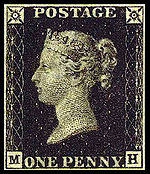Summary | Excerpt | Reading Guide | Reviews | Beyond the book | Read-Alikes | Genres & Themes | Author Bio

An enthralling mystery, a piercing depiction of class and society, The Sweetness at the Bottom of the Pie is a masterfully told tale of deceptions—and a rich literary delight.
In his wickedly brilliant first novel, Debut Dagger Award winner Alan Bradley introduces one of the most singular and engaging heroines in recent fiction: eleven-year-old Flavia de Luce, an aspiring chemist with a passion for poison. It is the summer of 1950—and a series of inexplicable events has struck Buckshaw, the decaying English mansion that Flavia’s family calls home. A dead bird is found on the doorstep, a postage stamp bizarrely pinned to its beak. Hours later, Flavia finds a man lying in the cucumber patch and watches him as he takes his dying breath. For Flavia, who is both appalled and delighted, life begins in earnest when murder comes to Buckshaw. “I wish I could say I was afraid, but I wasn’t. Quite the contrary. This was by far the most interesting thing that had ever happened to me in my entire life.”
To Flavia the investigation is the stuff of science: full of possibilities, contradictions, and connections. Soon her father, a man raising his three daughters alone, is seized, accused of murder. And in a police cell, during a violent thunderstorm, Colonel de Luce tells his daughter an astounding story—of a schoolboy friendship turned ugly, of a priceless object that vanished in a bizarre and brazen act of thievery, of a Latin teacher who flung himself to his death from the school’s tower thirty years before. Now Flavia is armed with more than enough knowledge to tie two distant deaths together, to examine new suspects, and begin a search that will lead her all the way to the King of England himself. Of this much the girl is sure: her father is innocent of murder—but protecting her and her sisters from something even worse…
Flavia de Luce, an eleven-year-old British sleuth who very recently entered the literary scene, already has a fan club! I'm joining the quickly-growing group of readers who have fallen in love with this winning heroine. After following Flavia through her first crime-solving adventure, with two more to come, I say, "Sign me up and bring them on!"..continued
Full Review
 (605 words)
(605 words)
(Reviewed by Vy Armour).
 Great Britain's "Penny Black" plays a significant role in The Sweetness at the Bottom of the Pie. It was the first stamp, first issued on May 6, 1840. It cost one penny, was printed in black, and bore the profile of Queen Victoria. For the next 60 years (until her death in 1901), Queen Victoria's portrait was the only subject allowed on British stamps.
Great Britain's "Penny Black" plays a significant role in The Sweetness at the Bottom of the Pie. It was the first stamp, first issued on May 6, 1840. It cost one penny, was printed in black, and bore the profile of Queen Victoria. For the next 60 years (until her death in 1901), Queen Victoria's portrait was the only subject allowed on British stamps.
In the early days of the postal service stamps and envelopes did not exist. A letter was folded, sealed shut and, although it was possible to prepay, it was usually the person who received the letter who paid for the delivery costs. To avoid payment, many people refused to accept letters; others developed codes, placing secret marks on the outside of the letter that conveyed their ...

If you liked The Sweetness at the Bottom of the Pie, try these:

by Elly Griffiths
Published 2019
Death lies between the lines when the events of a dark story start coming true in this haunting modern gothic mystery, perfect for fans of Magpie Murders and The Lake House.

by John Keyse-Walker
Published 2016
Written with a wry, witty narrative voice and a plot full of twists and turns, John Keyse-Walker's Minotaur Books/Mystery Writers of America First Crime Novel Award-winning debut is a pure delight.